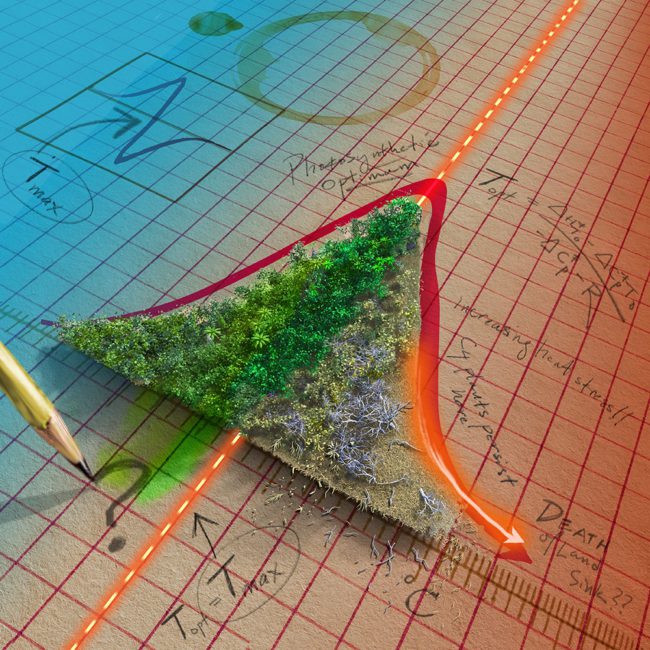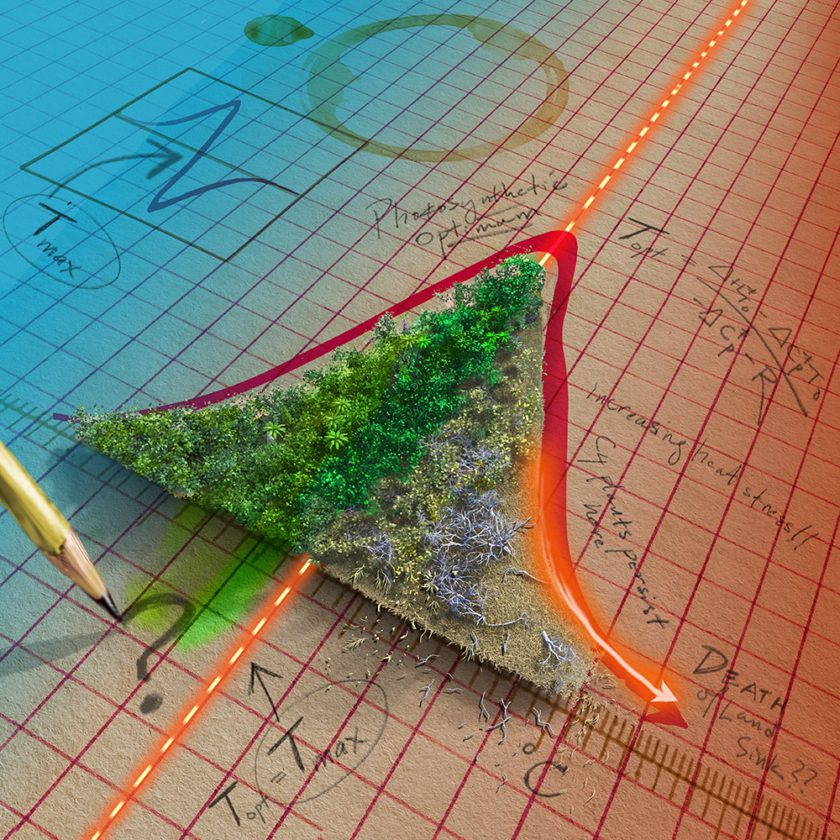
Researchers at Northern Arizona University, the Woodwell Climate Research Center and the University of Waikato, New Zealand, have published a new study within Science Advances that asked the question “How close are we to the temperature tipping point of the terrestrial biosphere?“
Currently vegetation on the planet absorbs roughly around 30% of the CO2 that we emit. What this paper reveals is that these natural biological processes are temperature dependent. As our emissions continue to increase global temperatures there is a looming tipping point where the temperature increase is sufficient to turn these existing carbon sinks into a carbon source. When will we reach that tipping point, how far away is it?
Given the service the ecosystem currently renders to us by absorbing 30% of our emissions, the thought that there is a tipping point coming should greatly worry us.
Let’s take a look at the newly published paper and see what answer they have come up with.
How close are we to the temperature tipping point of the terrestrial biosphere?
Published within Science Advances on jan 13, 2020. What this paper does is to utilise data from the largest continuous carbon flux monitoring network. From this they have constructed the first observationally derived temperature response curves for global land carbon uptake.
The Alarming Results
Under the business as usual scenario the land sink strength will be halved by as early as 2040.
The researchers have detected a temperature threshold beyond which plant carbon uptake slows and carbon release accelerates.
Lead author, Katharyn Duffy, a postdoctoral researcher at NAU, noticed sharp declines in photosynthesis above this temperature threshold in nearly every biome across the globe, even after removing other effects such as water and sunlight.
“The Earth has a steadily growing fever, and much like the human body, we know every biological process has a range of temperatures at which it performs optimally, and ones above which function deteriorates,” Duffy said. “So, we wanted to ask, how much can plants withstand?”
This study is the first to detect a temperature threshold for photosynthesis from observational data at a global scale. While temperature thresholds for photosynthesis and respiration have been studied in the lab, the Fluxnet data provide a window into what ecosystems across Earth are actually experiencing and how they are responding.
“We know that the temperature optima for humans lie around 37 degrees Celsius (98 degrees Fahrenheit), but we in the scientific community didn’t know what those optima were for the terrestrial biosphere,” Duffy said.
She teamed up with researchers at Woodwell Climate and the University of Waikato who recently developed a new approach to answer that question: MacroMolecular Rate Theory (MMRT). With its basis in the principles of thermodynamics, MMRT allowed the researchers to generate temperature curves for every major biome and the globe.
What is the tipping point temperature?
The researchers found that temperature “peaks” for carbon uptake—18 degrees C for the more widespread C3 plants and 28 degrees C for C4 plants—are already being exceeded in nature, but saw no temperature check on respiration.
Side Note: What do the terms C3 and C4 refer to?
- C3 plants are plants in which the initial product of the assimilation of carbon dioxide through photosynthesis is 3-phosphoglycerate, which contains 3 carbon atoms. The majority of plant species on Earth are C3 (about 85%)
- Plants have evolved another form of photosynthesis to help reduce water vapour losses in hot, dry environments called C4. In C4 photosynthesis, plants avoid photorespiration.
- You can read more about this at the Khan Academy – C3, C4, and CAM plants
This means that in many biomes, continued warming will cause photosynthesis to decline while respiration rates rise exponentially, tipping the balance of ecosystems from carbon sink to carbon source and accelerating climate change.
“Different types of plants vary in the details of their temperature responses, but all show declines in photosynthesis when it gets too warm,”
NAU co-author George Koch.
Right now, less than 10 percent of the terrestrial biosphere experiences temperatures beyond this photosynthetic maximum. But at the current rate of emissions, up to half the terrestrial biosphere could experience temperatures beyond that productivity threshold by mid-century—and some of the most carbon-rich biomes in the world, including tropical rainforests in the Amazon and Southeast Asia and the Taiga in Russia and Canada, will be among the first to hit that tipping point.
“The most striking thing our analysis showed is that the temperature optima for photosynthesis in all ecosystems were so low, Combined with the increased rate of ecosystem respiration across the temperatures we observed, our findings suggest that any temperature increase above 18 degrees C is potentially detrimental to the terrestrial carbon sink. Without curbing warming to remain at or below the levels established in the Paris Climate Accord, the land carbon sink will not continue to offset our emissions and buy us time.”
Vic Arcus, a biologist at the University of Waikato and co-author of the study
The above posting has been prepared using materials provided by Kate Petersen in the Center for Ecosystem Science and Society at Northern Arizona University.
The full published paper is available on Science Advances.
